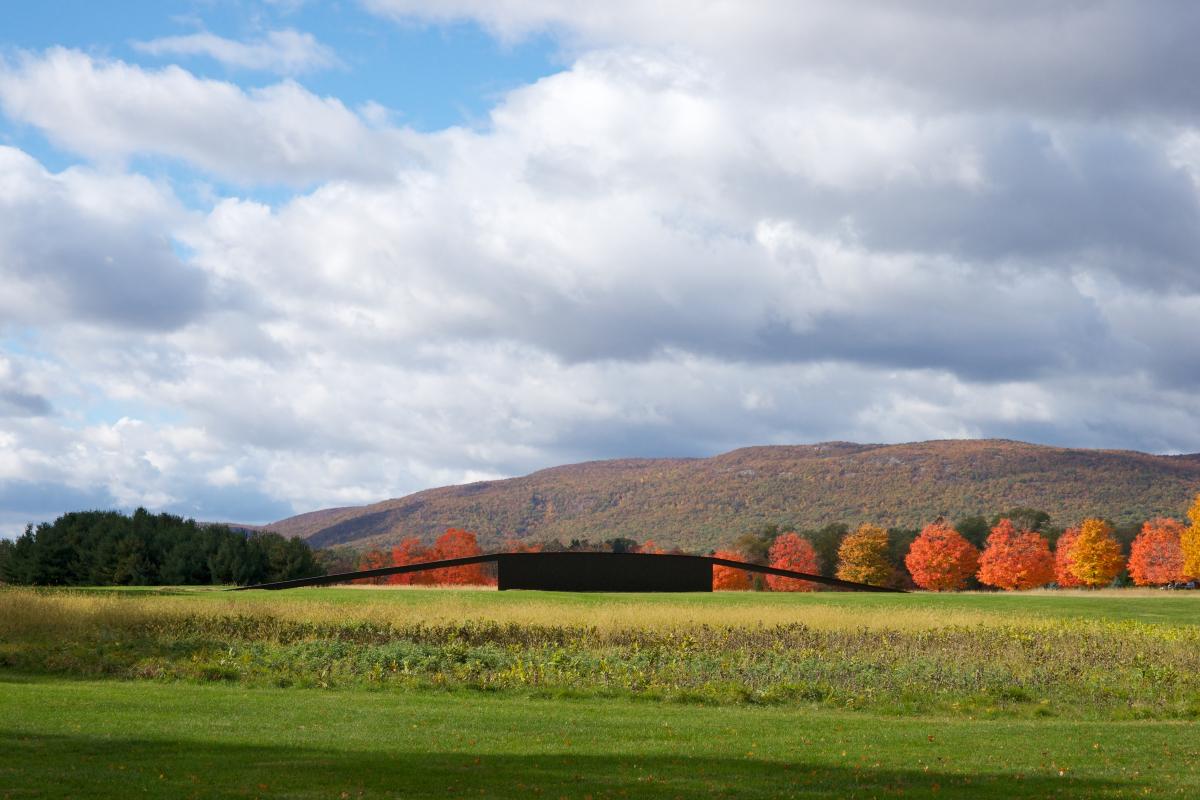On view

American, 1937-2025
Untitled, 1970
Painted weathering steel
10 ft. x 212 ft. 5 1/2 in. x 12 in. (304.8 cm x 64.8 m x 30.5 cm)
Gift of the Ralph E. Ogden Foundation
© Robert Grosvenor. Courtesy Paula Cooper Gallery, New York
Photo by Jerry L. Thompson
Robert Grosvenor uses only a few simple elements to create his dramatic structures, an artistic approach he first embraced in the mid-1960s. After 1970 he began to work outdoors, making abstract sculptures that respond to the surrounding landscape, among them Untitled, which echoes the roll of the land and the contours of distant hills. This expansive horizontal construction measures 212 feet long but only twelve inches wide. It spans a relatively flat field along an approximate east-west axis, drawing the viewer’s eye panoramically to the distant Hudson Highlands and Schunnemunk Mountain ridge. In Untitled, as in many works in Storm King’s collection, nature and industrial materials enhance one another.
Although its spine appears to be made of a single, long I-beam, Untitled is in fact composed of several, joined together and painted black to appear as a seamless whole. Seen head on, the central wall focuses attention on the thin frontal plane of the sculpture, blocking the view through the work’s central core and heightening the viewer’s sensitivity to the natural world, visible through the flanking negative spaces. This broad expanse appears to disappear, becoming two-dimensional and linear, when the work is viewed from either end.
When Grosvenor visited Storm King in 1971, he felt that the flat, open location was perfect for a long, thin piece with a central panel that he had previously conceptualized in 1970. Hence, the work is dated 1970, but it was not fabricated until 1974. It was the second site-specific work to be installed at Storm King.
Although its spine appears to be made of a single, long I-beam, Untitled is in fact composed of several, joined together and painted black to appear as a seamless whole. Seen head on, the central wall focuses attention on the thin frontal plane of the sculpture, blocking the view through the work’s central core and heightening the viewer’s sensitivity to the natural world, visible through the flanking negative spaces. This broad expanse appears to disappear, becoming two-dimensional and linear, when the work is viewed from either end.
When Grosvenor visited Storm King in 1971, he felt that the flat, open location was perfect for a long, thin piece with a central panel that he had previously conceptualized in 1970. Hence, the work is dated 1970, but it was not fabricated until 1974. It was the second site-specific work to be installed at Storm King.
